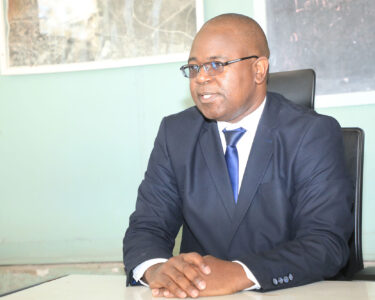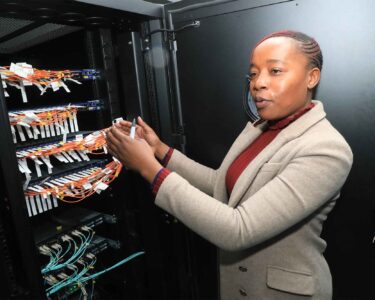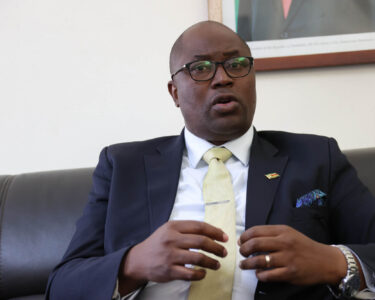Since independence on 18 April, 1980, successive governments have been seized with the indigenisation of the economy, culminating in the enactment of the Indigenisation and Economic Empowerment Act in 2007/8. The Act prescribed a 51-49% ratio in favour of indigenous businessmen in terms of ownership of businesses in critical areas. However, it was often subject to abuse by well-heeled foreign investors who used their financial muscle to buy out locals to the detriment of the country’s development.
Sensing that the country was being shortchanged, His Excellency, President Mnangagwa decided to it was time for Zimbabweans to take full control of their destiny. Instead of amending the Indigenisation and Economic Empowerment Act, he substituted it with a new mantra: Nyika inovakwa nevene vayo/Ilizwe lakhiwa ngabanikazi labo.
This was a clarion call to all Zimbabweans, at home and abroad, to take full responsibility for the development of their country, sanctions or no sanctions. As they say, the proof of the pudding is in the eating. President Mnangagwa put his mantra to the test during the rehabilitation of the Harare-Masvingo-Beitbridge Highway by awarding the tender to five indigenous companies, who have exceeded expectations in delivering on their mandate.
Not surprisingly, when the idea of the Mbudzi Interchange was mooted, it was unanimously agreed that the contract be awarded to local companies once more. Tefoma was given the nod and are busy working on the interchange, using internal resources and local manpower. As our Senior Correspondent, Garikai Mazara, recently found out, “there is no foreign national” at the project site. For the finer details, please read on . . .
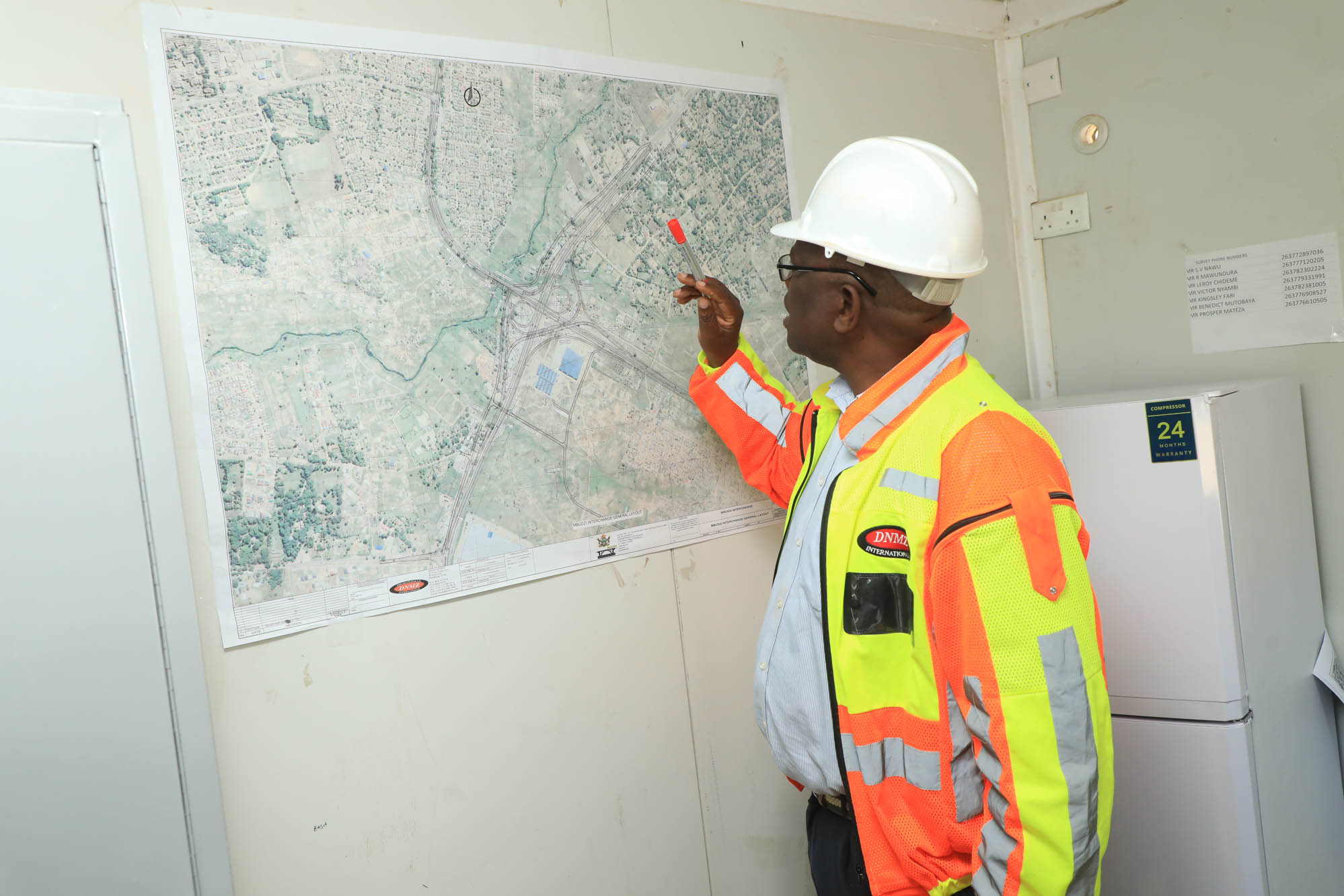
the Mbudzi Interchange shows some of the designs that will ensure that no
motorist will stop or give way when entering the interchange
The more things change, the more they stay the same. Whoever coined this adage probably had no idea that someday, in the not-too-distant future, there would be a place called Mbudzi Roundabout.
Perhaps a little anecdote will do: The roundabout was so named because nearby was a thriving open-air market for goats or mbudzi in Shona. Any Harare resident who wanted to buy a goat, whether for a weekend braai or for traditional ceremonies like masungiro (a Shona custom which requires bridegrooms to surrender their newly wedded wives to their in-laws for the purposes of giving birth to their first child).
As much as the goat plays a critical and crucial role in African culture (it even has a month named after it), the roundabout turned out to be a hub connecting the capital city, Harare, with its southern suburbs as well as the entire Southern African Development Community (Sadc) region.
The Mbudzi roundabout started its life as intersection for at least four major arteries, running north to south and east to west. These were Highglen Road, Chitungwiza Road, Simon Mazorodze Road and the Masvingo Highway, respectively. As Harare continued to expand to the south and west, with the opening up of new suburbs, new business enterprises (notably the Boka Tobacco Auction Floors), a new cemetery (Granville, ironically also called KuMbudzi), mega churches (e.g. Walter Magaya’s PHD Ministries) and a sprinkling of leisure spots, so did the volume of human and vehicular traffic.
Soon, an informal bus stop for commuters and/or hitch-hikers travelling to Chivhu, Mvuma, Masvingo, Beitbridge and beyond was born. It was also named after the humble goat, whose sales continue to burgeon for the intrepid informal traders, who were over time joined by vendors selling anything from cigarettes, airtime, bananas, soft drinks, etc.
Traffic congestion became the order of the day, especially the morning and evening peak hours. Before long, traffic gridlocks extending for as much as six hours became the norm. Getting into the roundabout after 4.00 pm on a weekday was nothing short of a nightmare as the traffic jam lasted, at times, until 10.00 pm.
The intersection was definitely overdue for an upgrade; and that upgrade would come in the form of a roundabout . . . But that proved to be a temporary panacea, given Harare’s ever-growing domestic traffic volumes, not to mention cross-border traffic in the form of haulage trucks and buses.
The Harare City Council was seemingly hamstrung to bring sanity to the disaster unfolding in its own backyard. It was clearly time for the government under the Second Republic to step in under its flagship Emergency Road Rehabilitation Programme 2 (ERRP2). The roundabout was going to give way to an interchange — the Mbudzi Interchange.
An octopus-like network of bridges, loops and ramps, the 13-bridge road access circuit is going to be one of the biggest such interchanges in the sub-region, outside South Africa. Apart from the tonnes upon tonnes of cement and steel works, one of the most striking things about the project is the glaring absence of expatriate labour. Or rather, expatriate skills. The ongoing project is testament to the enormous investment in human capital development undertaken by successive Zimbabwean governments since independence, particularly under the Second Republic.
Since moving into State House in November 2017, His Excellency, President Emmerson Mnangagwa, has been pushing a developmental agenda anchored on the theme: Nyika inovakwa nevene vayo/Ilizwe lakhiwa ngabanikazi labo. Loosely translated, it means we are the masters of their own destiny.
While the doomsayers may have dismissed the President’s call as political banter or an election gimmick, a recent tour of the Mbudzi Interchange was ample proof that Zimbabweans were indeed walking the talk. With no less than 600 workers on site, there is not even a single foreign face.
The interchange was designed by a team of Zimbabweans, led by Dube, Nyoni, Madzikanda and Zulu (DNMZ), a partnership of Zimbabwean architects and civil engineers. According to the resident engineer, Emmanuel Dube, a member of the design team, the driving force behind the interchange was to ensure that no motorist stops or gives way when entering the interchange.
“The concept of the interchange is such that it fits in seamlessly into the rehabilitation of the Harare-Masvingo Highway, which will spill over into the Harare-Chirundu Highway. The smooth flow of traffic on this stretch of the road had been severely compromised by the perennial gridlocks at the Mbudzi roundabout. The interchange will put an end to that,” Eng. Dube told Brick by Brick.
“The interchange works in such a way that a motorist travelling from Masvingo does not have to stop to give way to oncoming traffic. Instead, he/she will either enter into the Highglen Road via the off-ramp, goes straight into Harare’s Central Business District via the top level or proceed to Chitungwiza via a designated loop. The top level is the main stem of the interchange and has a network of loops and ramps that motorists will use to communicate with whichever side of town they want to,” explained Eng. Dube.
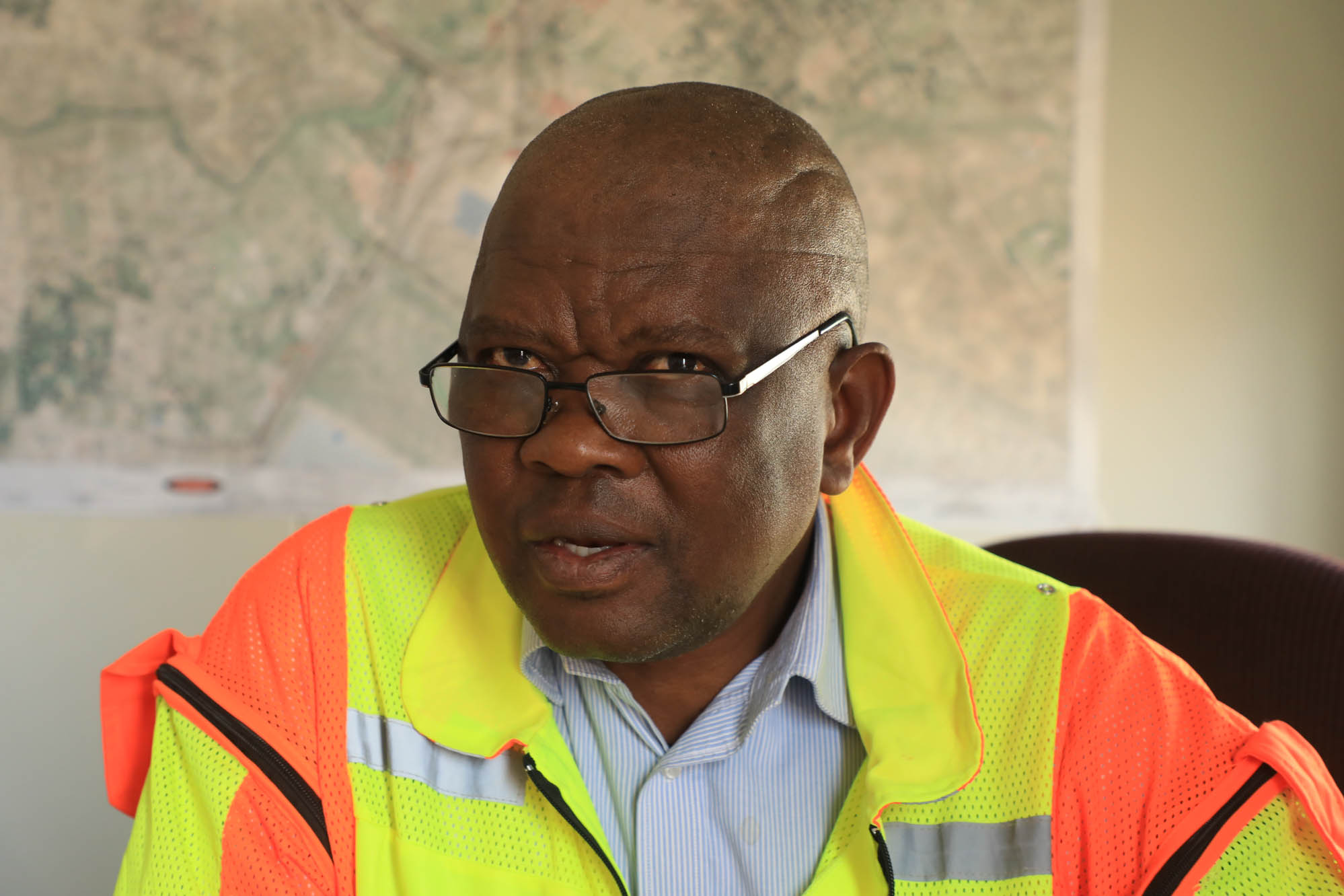
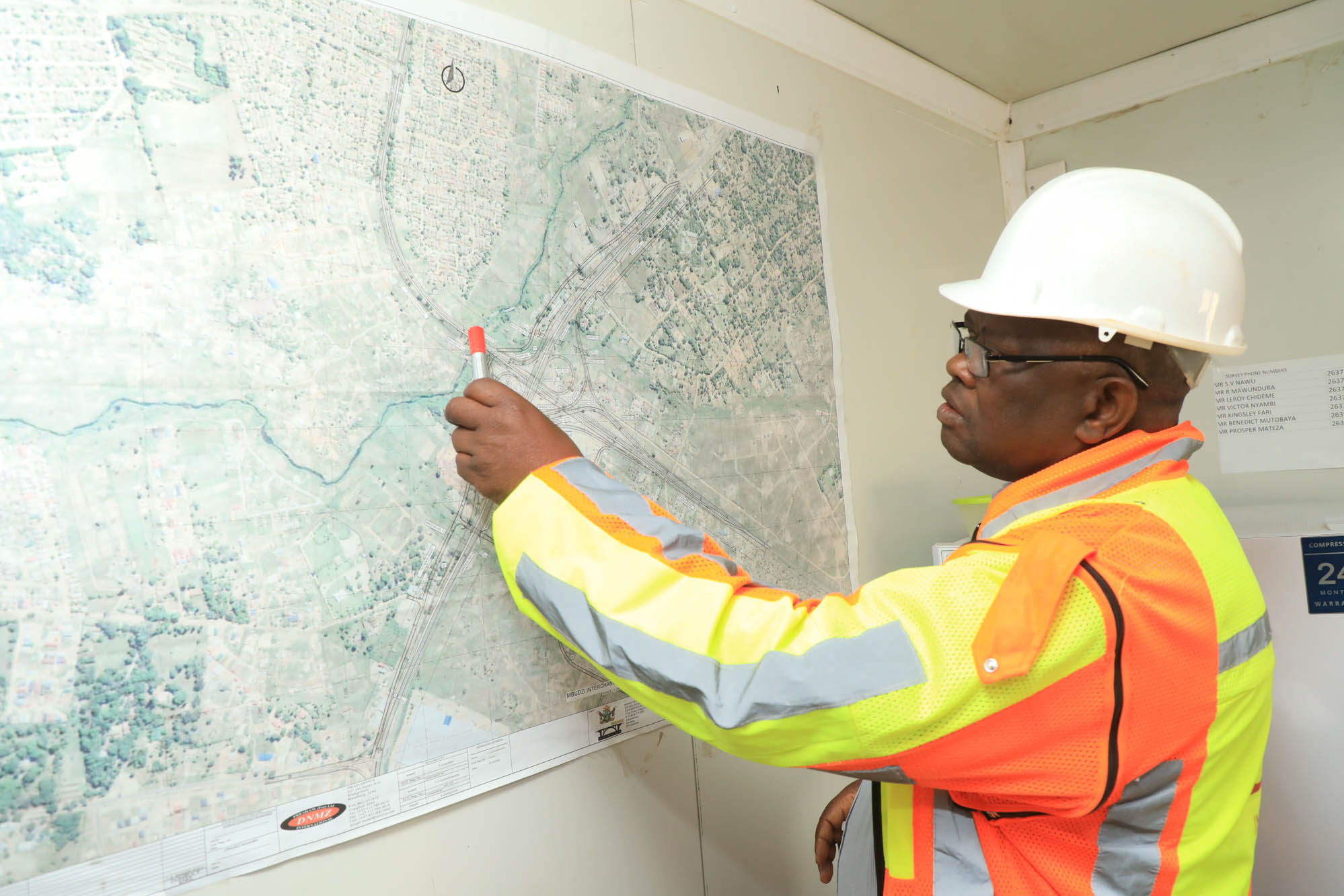
“Similarly, traffic going southwards, or out of Harare, either proceeds unhindered towards Masvingo, proceeds to Chitungwiza off-ramp or connects to Glen Norah through a designated loop.
“Those transitioning from Glen Norah with have the option of proceeding straight to Chitungwiza, off ramp to Harare or off loop to Masvingo. The same goes for those travelling out of Chitungwiza, who have the option of travelling straight to Glen Norah, off ramp to Masvingo and through a designated loop to the town centre.
“Our primary concern when designing this interchange was cargo traffic. We want cargo to pass through here as efficiently as possible and what was happening at Mbudzi before this transformation was against the free flow of traffic. But, as the President says, Zimbabwe is working towards becoming an upper-middle income economy [by 2030], hence the urgent need to address the challenges obtaining at the Mbudzi roundabout,” said Eng. Dube.
Construction of the Mbudzi Interchange, which kicked into gear in September 2022, is expected to run for 18 months and, barring any unforeseen circumstances, should be completed by March 2024.
Obviously, a project of this magnitude is bound to face hurdles, and one such hurdle is the thorny issue of compensation to property owners whose homes will be demolished to make way for the interchange. Noted the project director, Eng. Lawrence Mberikwazvo: “One of the biggest challenges that we are facing is the compensation of owners whose properties were affected by the construction of the interchange.
“Though some, cognisant of the importance of this project to national goals and objectives, were willing to accept the government’s offer, there are others who played hard ball, to the extent of appealing to the courts. I must commend the government, though, because it is a listening government, for allowing these property owners to get fair value for their properties.
“You will find that some of these owners were not comfortable with their properties being valued by government valuators, which should be the norm, because they thought they would not get fair compensation. And some, even after engaging third parties to evaluate their properties, still resorted to the courts. This has led to delays in our progress because where we were supposed to work on, say, 500 metres, we end up doing 100 metres, sometimes less.
“And when you have heavy equipment like we do here, it is not economic to deploy it on short distances. The cost is higher because we end up spending more time navigating the machinery rather than working. To that end, the delayed compensation has put a halt to some sections of the interchange that we should be working on.”
Eng. Mberikwazvo also lamented the unfettered movement of people around the project site.
Said Eng. Mberikwazvo: “As much as we would like the site to be free of people, especially those in transit, this has proved next to impossible. Part of the problem is that a police station was located right in the midst of the project site. This apparently gave some people an excuse to continue milling around the site, even though it was now deemed to be a ‘hard hat’ area. However, we are happy that the police post has since been relocated. But, this proved to be only a temporary relief since there are a number of settlements within the vicinity of the project site.”
The teething challenges notwithstanding, the aesthetic design of the interchange which will have the entire Sadc sub-region drooling, a fact that Eng. Dube is prepared to proclaim from the rooftops: “This interchange is going to be a game-changer. I can say, without any hesitation, that all traffic, especially cargo, will find that transiting through Harare will provide them with an exceptional world-class experience.
“And what is particularly pleasing is that the Mbudzi Interchange is a home-grown product, right from the design (which was done by locals) up to its construction. Not even a single foreign national is involved in the project.
“This must be commended because our government is implementing Education 5.0, which focuses on providing practical solutions to real-life situations. The Mbudzi Interchange is an excellent example of that, since we have been working together as a team to provide home-grown solutions to our challenges.”



